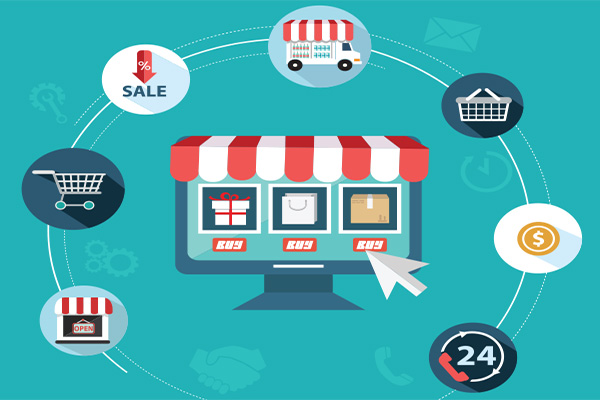B2B Vs. B2C Content: How To Differentiate Your Marketing Copy

Many small business owners aren’t aware that there’s a huge difference in the way they should communicate with their B2B prospects than they do with their B2C prospects. In fact, it’s very common for the small business owner to use the same type of language, cadence, and marketing tactics on all of their digital marketing media.
This is a huge mistake, for the following reasons:
1. B2B and B2C Consumers Have Different Shopping Goals and Habits
Let’s take a basic look at the difference between a B2B prospect and a B2C prospect.
B2B stands for business to business. This means that the sales vendor’s goal is to sell their products and services to other business entities.
Examples include:
- Phone systems
- Office equipment
- Industry supplies
If the product (or service) helps a business to operate, or if they help a business to increase its value, then the business end-user will be interested in purchasing the vendor’s offerings.
B2C stands for business to consumer. A consumer is the average person who purchases consumable products. These include things like:
- Clothing
- Food
- Household products
- Pet products
- Cosmetics
Buying consumables is usually a straight-forward process. The end-user has a desire or a need to fill, and the vendor provides said product (or service) to fulfill those needs and desires.
Also, because vendors of B2C offerings are selling to consumers in casual and personal settings, they don’t need to approach consumers in a formal fashion. In fact, nowadays, B2C consumers don’t trust vendors who come across as unrelatable, out-of-touch, too formal, or non-transparent.
On the other hand, the B2B sales approach requires a lot more formality. Part of the reason is that there are at least a handful of decision makers in the final purchase process.
At the very least, there’s a purchasing person, or a department. Then the decision has to be ran through a company’s accounting department. A manager or two might be involved. And depending upon the size of the entity making the purchase, there might be a meeting or two involved in pushing the decision to make the purchase along.
2. They Use Different Processes In Making Decisions
Here’s some major differences in how each segment of consumers make decisions about the products they decide to purchase from your website:
The B2C consumer has arrived to your eCommerce site because they’re ready to make a purchase. Depending on the price point of the offering, they might need a little more information before making a final purchase. Consumers like these rely on information such as product descriptions, and previous customer testimonies.
By and large, B2C purchases are a quickly and painless process. The consumer arrives to the site, they select the products they want, they use their own personal funds to pay for the products, they arrange for delivery, and the process is complete!
Not so for B2B purchases.
Again, there will be a person (if not an entire department) that’s responsible for previewing the sales information. Then, they’ll make selections based upon the needs of the company, their budgeting restrictions, and the amount of overall value the product will allow the entity to realize.
After making a suggested list of products to purchase (along with the necessary quantity needed for the purchase), the list will get passed up the management chain. As the list gets passed around, products will be added to the list, or removed. And it’s very common for the quality of the products on the list to be amended, too. This is a process that could take weeks, and depending upon the scale and the cost of the product, the final decision might take months to complete.
Therefore, it’s very common for a B2B eCommerce website to feature educational content. It should feature lots of information for the initial contact to digest, and in many cases, the B2B website simply serves as a lead-generation funnel that allows the vendor’s sales team to contact warm prospects.
There’s none of the immediacy in B2B decision making that a vendor would realize within B2C decision making.
3. Other Nuances to Consider
Because the audience and the sales process differs between the two consumer sectors, it’s crucial to keep these in mind when you’re drafting site copy.
For example, since B2C consumers have the ability to make immediate decisions, it’s a great idea to use emotional triggers such as urgency, or FOMO (Fear of Missing Out). This is best accomplished by using verbiage such as “Sale ends tomorrow!” or “Buy while supplies last!”
Other types of emotional triggers can be used, but the goal is to use language that appeals to the decision making processes of the non-business consumer. On the other hand, trying to spur a business consumer through the sales process quickly, hyperbolically, or by using the other obvious triggers could work against you.
The fact is this:
When a B2B consumer wants to make a purchase, it’s not a matter of if they need the product. It’s an issue of whether or not a vendor’s product is the best purchase decision for their company.
That means that a vendor’s sales team will need to spend time massaging their leads through the sales process. In the meantime, their lead-gen website shouldn’t contain the type of language associated with typical marketing tactics. Instead, it should contain the type of language that allows a B2B consumer feel that their corporate goals will be met by purchasing the product.
If any marketing tactics are used at all, then it should be the careful use of specific industry jargon. This allows decision makers to feel that the vendor understands the needs and the goals of their specific industry.
Tagged B2B, B2C, content marketing, eCommerce, marketing, Prospects





